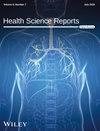Atypical Manifestations of Old World Cutaneous Leishmaniasis: A Systematic Review and Clinical Atlas of Unusual Clinical and Specific Anatomical Presentations
Abstract
Background and Aims
Cutaneous leishmaniasis (CL) represents the most common form of leishmaniasis. It imposes a significant medical burden due to long-lasting ulcers and disfiguring scars, underscoring the need for comprehensive CL control strategies, particularly in endemic regions. This study aims to classify atypical CL presentations for clinical practitioners. Additionally, we compiled and categorized original images from our clinical encounters with CL to create a clinical atlas enhancing the existing literature.
Methods
A systematic search for atypical manifestations of Old World CL was conducted in June 2023 via the PubMed database, utilizing MeSH-based keywords including leishmaniasis, atypical, manifestation, and characteristics. All of the records were included. Exclusion criteria included records published before the 20th century, non-English articles, review articles, nonclinical studies (experimental and epidemiological), studies focusing on New World CL (based on the study geographical location), or focusing on Post-Kala-Azar leishmaniasis. Relevant articles were selected and assessed.
Results
Based on the clinical manifestations described in the selected studies, articles were classified into the following categories: (a) subacute CL, (b) chronic CL, (c) CL associated with lymphatic involvement, (d) CL associated with an immunocompromised state, and (e) cutaneous leishmaniasis on special anatomical sites. Clinical, diagnostic, and therapeutic facets were subsequently explored.
Conclusion
The diagnosis of leishmaniasis can be challenging. Given the broadening spectrum of differential diagnoses for CL in clinical settings, dermatologists, pediatric dermatologists, internists, infectious disease specialists, and pediatricians must be aware of this classification of atypical CL.


 求助内容:
求助内容: 应助结果提醒方式:
应助结果提醒方式:


